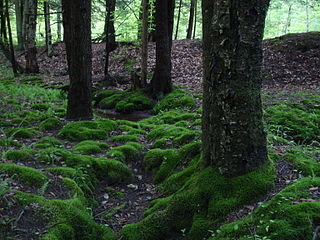
Mosses are small, non-vascular flowerless plants in the taxonomic division Bryophytasensu stricto. Bryophyta may also refer to the parent group bryophytes, which comprise liverworts, mosses, and hornworts. Mosses typically form dense green clumps or mats, often in damp or shady locations. The individual plants are usually composed of simple leaves that are generally only one cell thick, attached to a stem that may be branched or unbranched and has only a limited role in conducting water and nutrients. Although some species have conducting tissues, these are generally poorly developed and structurally different from similar tissue found in vascular plants. Mosses do not have seeds and after fertilisation develop sporophytes with unbranched stalks topped with single capsules containing spores. They are typically 0.2–10 cm (0.1–3.9 in) tall, though some species are much larger. Dawsonia, the tallest moss in the world, can grow to 50 cm (20 in) in height. There are approximately 12,000 species.

Zmudowski State Beach is located on Monterey Bay, in Moss Landing, Monterey County, northern California.
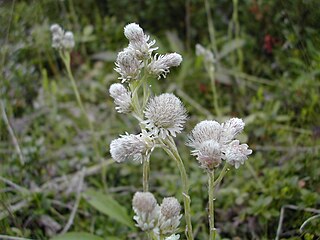
Antennaria alpina is a European and North American species of plant in the family Asteraceae. Antennaria alpina is native to mountainous and subarctic regions of Scandinavia, Greenland, Alaska, and the Canadian Arctic, extending south at high altitudes in mountains in the Rocky Mountains south to Montana and Wyoming.
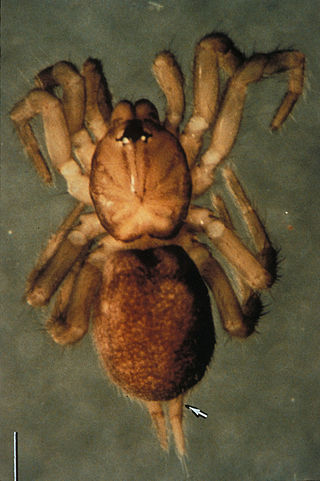
The spruce-fir moss spider is an endangered species of spider found at high elevations in the southern Appalachian Mountains. First identified in 1923, it inhabits moss that grows on rocks underneath the forest canopy.

Arctous alpina, the alpine bearberry, mountain bearberry or black bearberry, is a dwarf shrub in the heather family Ericaceae. The basionym of this species is Arbutus alpinaL..

Moss Vale is a town in the Southern Highlands of New South Wales, Australia, in the Wingecarribee Shire. It is located on the Illawarra Highway, which connects to Wollongong and the Illawarra coast via Macquarie Pass.

Allium textile is a common species of wild onion found in the central part of North America.
Phlegmariurus nutans, synonym Huperzia nutans, known as wawaeʻiole or nodding clubmoss, is a species of club moss in the family Lycopodiaceae. It is endemic to wet forests and cliffside shrublands on the islands of Oahu and Kauai in Hawaii. It is threatened by habitat loss.
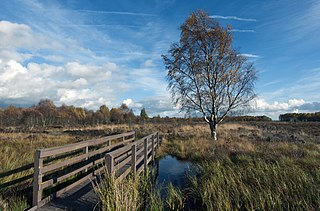
Flanders Moss is an area of raised bog lying in the Carse of Forth in west Stirlingshire, Scotland. The villages of Thornhill and Port of Menteith lie to the north with the villages of Kippen and Buchlyvie lying to the south. The moss is a National Nature Reserve, managed by NatureScot. Formed on the Carse of Stirling over 8000 years ago, it is an internationally important habitat currently undergoing active restoration. The eastern part of Flanders Moss is the largest raised bog in Europe to remain in a predominantly near-natural state.
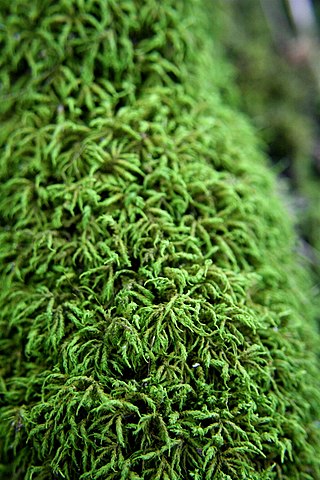
Entodon seductrix, known as the seductive entodon moss or round-stem silk moss, is a species of Entodontaceae.

Platyhypnidium riparioides, the long-beaked water feathermoss, is a species of aquatic moss commonly found in many regions. This species is among the largest aquatic mosses growing up to 15 cm long. P. riparioides grows in a procumbent or pendulous fashion along rocks and tree roots and may form extensive lax mats of many intermingled plants. It is widely distributed South of the Arctic and can grow abundantly in suitable areas.
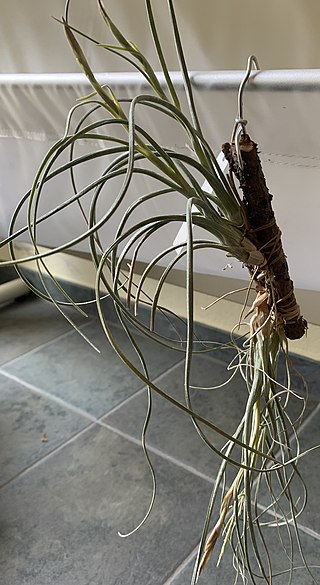
Tillandsia baileyi, commonly known as the reflexed airplant or Bailey's ball moss, is a species of bromeliad that is native to southern Texas in the United States and Tamaulipas in Mexico. It is found along the Gulf of Mexico from Kingsville, Texas to Tampico, Tamaulipas. Preferred host plants for this epiphyte include Southern live oak and Texas ebony.

Zygodon gracilis, the slender yokemoss, is a moss species in the genus Zygodon. It is a rare lithophyte found to only grow on certain localities of limestone outcrops that has high calcium carbonate content. The current global conservation status of Z. gracilis is considered to be "imperiled".

Cyrtandra cyaneoides is a rare species of flowering plant in the African violet family known by the common name māpele. It is endemic to Kauaʻi in Hawaiʻi, where it is known from eleven populations containing a total of under 800 individual plants. Several of these were discovered between 2003 and 2008. It is a shrub that grows 1 to 6 meters tall, bears white flowers, and egg-shaped berries. It was federally listed as an endangered species in 1996.

The Garden Mountain Cluster is a region in the Jefferson National Forest recognized by The Wilderness Society for its diversity of habitats extending along the east, south and west of Burke's Garden. The cluster, part of the Appalachian Mountains in southwest Virginia, connects wildlands in the high country of Garden Mountain and adjacent streams and ridges in one of the most remote areas of Virginia.

Fissidens limbatus commonly known as Herzog's pocket-moss, is a moss in the family Fissidentaceae. This species is found growing in high elevations in tropical America in addition to the US, Mexico and Canada. Montagne first collected F. crispus in 1838.
Wilfred "Wilf" Borden Schofield was a Canadian botanist, specializing in mosses and liverworts. He was considered by many "the foremost bryologist in Canada".

Ulota crispa, the crisped pincushion moss, is a species of acrocarpous moss in the genus Ulota native to eastern North America. It is generally found in tight mounds on tree bark.

Polytrichum piliferum, the bristly haircap, is an evergreen perennial species of moss in the family Polytrichaceae. The bristly haircap moss is small-sized to medium-sized and forms loose tufts with wine-reddish stems. It is an acrocarpous moss that appears bluish-green to grey. This moss grows in clumps on erect shoots and becomes a red-brown colour as it grows older. The most distinguishing feature of P. piliferum is the long, white awn at the tips of the leaves, which also give this moss its grey colour. It is the only species in its genus where the awn is completely hyaline.

Sphagnum contortum is a species of moss reported in North America and Europe. NatureServe marked its global conservation status as Secure.

















